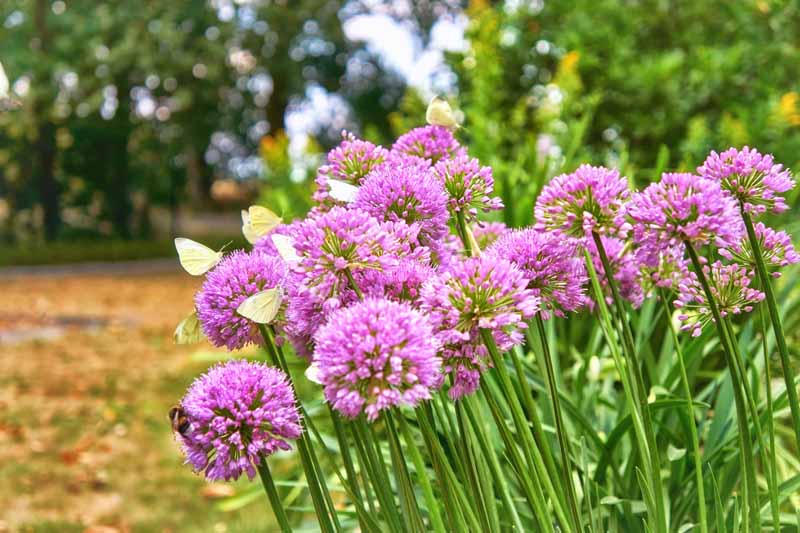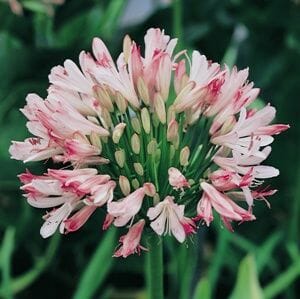Agapanthus Varieties: Picking the Best for Your Landscape
Agapanthus Varieties: Picking the Best for Your Landscape
Blog Article
Letting Loose the Secret to Effective Agapanthus Cultivation: Idea for a Flourishing Garden
In the realm of horticulture, growing agapanthus effectively calls for a critical method that includes various aspects of plant care. With mindful attention to information, one can open the keys to supporting these magnificent blossoms, resulting in a garden that prospers with elegance and vibrancy. By understanding the subtleties of agapanthus cultivation, one can create an environment where these plants thrive and flower generously. In the complying with conversation, we will explore vital pointers and methods that will certainly assist you in the direction of a prospering agapanthus garden, using insights into best techniques, dirt conditions, sprinkling techniques, and more.
Planting Agapanthus: Finest Practices
When growing Agapanthus, appropriate dirt preparation is necessary for ensuring successful development and advancement of these attractive flowers. Agapanthus, commonly understood as Lily of the Nile or African lily, thrives in well-draining dirt with a slightly acidic to neutral pH degree - Agapanthus. Before growing, it is critical to change hefty clay soils with raw material such as compost or peat moss to enhance water drainage and supply essential nutrients for the plants
To grow Agapanthus, pick a place that obtains full sunshine to partial color, as this will promote healthy growth and bountiful flowering. Dig an opening twice the diameter of the plant's origin ball and put the Agapanthus at the very same depth it was formerly expanding. Gently backfill the opening with dirt, weighing down securely to get rid of any air pockets around the origins.
Water the freshly planted Agapanthus completely and continue to maintain the soil uniformly wet, especially throughout the plant's energetic expanding period. Agapanthus. Applying a well balanced fertilizer once a month can better sustain the plant's growth and blooming. By adhering to these ideal practices for growing Agapanthus, you can develop a sensational display screen of these fascinating flowers in your garden
Suitable Dirt Issues for Agapanthus
For optimal growth and blooming success of Agapanthus plants, making sure the dirt problems are ideal is important. Agapanthus grows in well-draining soil with a slightly acidic to neutral pH level ranging from 6.0 to 7.0. This type of soil enables for appropriate water drainage, avoiding waterlogging which can lead to root rot. To enhance soil drainage, consider including raw material such as garden compost or peat moss when preparing the growing site. Furthermore, Agapanthus likes soil that is rich in nutrients, so including a balanced fertilizer during the growing season can promote healthy and balanced development and vivid flowers.

Watering and Feeding Tips
To guarantee healthy development and lively flowers, appropriate watering and fertilizing techniques are vital for successful Agapanthus farming. Agapanthus plants profit from regular watering, especially during the expanding period.
When it pertains to fertilizing Agapanthus, a balanced plant food with equivalent parts nitrogen, phosphorus, and potassium can be applied in the spring to advertise healthy and balanced growth and flowering. Slow-release plant foods are suitable for supplying nutrients gradually over an extensive duration. Avoid over-fertilizing, as this can cause extreme foliage growth at the expense of blossoms.
In addition, including natural matter like compost into the soil can boost nutrient degrees and improve dirt structure, aiding in the total health and wellness of the Agapanthus plants. By following directory these watering and feeding suggestions, garden enthusiasts can ensure their Agapanthus plants thrive and generate sensational screens of helpful resources flowers.
Trimming and Deadheading Techniques
Correct pruning and deadheading strategies play a critical function in keeping the health and wellness and appearances of Agapanthus plants, matching the essential methods of watering and fertilizing for effective growing. Trimming Agapanthus involves removing invested blossom heads, yellowing or dead fallen leaves, and total shaping of the plant to advertise better growth. Deadheading, the procedure of removing faded blossoms, not only improves the plant's appearance however additionally motivates more blooming.
When deadheading Agapanthus, it is suggested to snip off the blossom stem at the base using sharp, tidy shears. This process reroutes the plant's energy from seed manufacturing back right into root and vegetation growth, advertising a much healthier and much more durable plant. Normal deadheading can extend the blooming period of Agapanthus and avoid self-seeding, which can bring about overcrowding.
In terms of trimming, Agapanthus normally advantages from a light trim after blossoming to clean the plant and encourage fresh growth. Reducing the spent flower stems and eliminating any kind of broken or dead vegetation aids keep the plant's vitality and general appearance. Nevertheless, it is vital to stay clear of reducing into the crown of the plant, as this can compromise its health.

Protecting Agapanthus From Vermins and Diseases
Carrying out efficient parasite and illness monitoring approaches is important to safeguarding the health and wellness and vigor of Agapanthus plants in growing. One usual insect that influences Agapanthus is the Agapanthus borer, a caterpillar that tunnels right into the plant, triggering damages to the blossoms and leaves.
In addition to parasites, Agapanthus are susceptible to illness such as origin rot and fungal leaf areas. These concerns can frequently be stopped by ensuring appropriate water drainage and avoiding overwatering. Impacted components of the plant ought to be immediately gotten rid of to avoid additional spread if indicators of disease appear. Fungicides might likewise be used as a treatment procedure, adhering to the producer's guidelines very carefully. By remaining watchful and attending to pest and condition problems without delay, gardeners can assist their Agapanthus thrive and prosper.

Verdict
In final thought, effective cultivation of agapanthus calls for correct planting techniques, excellent soil problems, appropriate watering and feeding, routine pruning and deadheading, and defense from conditions and bugs. By complying with these techniques and pointers, gardeners can guarantee a prospering yard full of lovely agapanthus blossoms. Agapanthus. Remember to preserve constant treatment and attention to detail to advertise the health and longevity of these spectacular plants
When growing Agapanthus, correct dirt prep work is important for guaranteeing effective development and growth of these attractive blossoms.Water the newly planted Agapanthus thoroughly and continue to keep the soil evenly moist, especially during the plant's active growing season.For optimal development and flowering success of Agapanthus plants, ensuring the soil conditions are suitable is crucial. When hair transplanting or growing Agapanthus, make certain the dirt is well-prepared to provide the necessary structure for the plants to develop themselves efficiently. One usual parasite that influences Agapanthus is the Agapanthus borer, a caterpillar that passages right into the plant, creating damage to the flowers more info here and fallen leaves.
Report this page